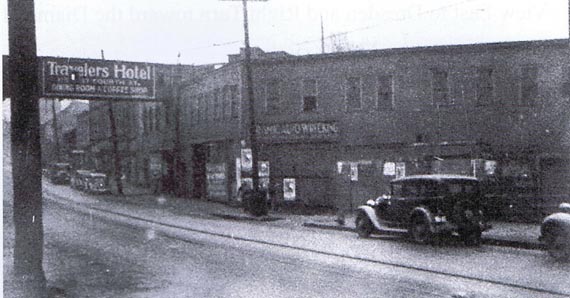
Y&O travelers off West 9th Street to Dresden Avenue were greeted by Travelers Hotel signs, advertised in the streetcar quarterly as the finest destination in East Liverpool. Located on 4th Street, the Travelers Hotel was a stop on the Y&O loop beyond the Diamond. In 2007 the Crockery City Cafe is operated by Ray Trevelline and Mrs. Vicki Lane. Filled with historic photos and hotel memorabilia, the owners have preserved a vital segment of East Liverpool's past. East Liverpool Historical Society.
Since the above picture and text was published in 2007 in "Ghost Rails III Electrics" by Wayne A. Cole, p. 94, the Crockery City Cafe has closed. Vicki and her sister has opened a Cafe where the Oasis was located at the foot of St Clair, Lincoln and Broadway and the Travelers Hotel is shut down. However, the display mentioned here is still there (as of this date, Dec, 3, 2011).
This picture and the following ten pictures are pictures taken of pictures and displays in the Travelers Hotel.
East Liverpool and Wellsville Railway 1890-1897
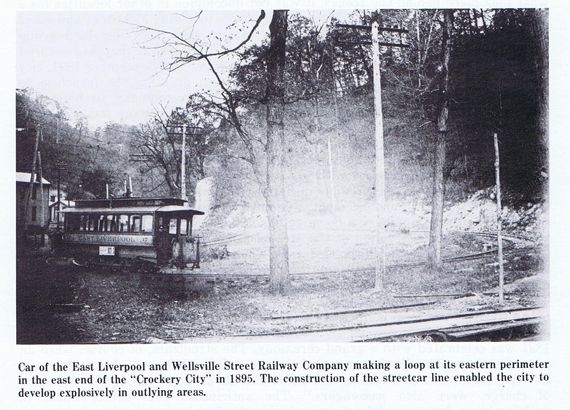
This line was approximately 7 miles long running from Boyce Street turnaround loop in the East End of East Liverpool as shown in the above picture to a similar turnaround loop in Wellsville. In East liverpool the line would run down Mulberry Street to Ohio Avenue then down the River road to 2nd Street and up Market Street into the downtown. (Picture from WHS. The verions here with the text from Hills and Kilns. The information about Boyce street paraphrased from Ghost Rails III).
East Liverpool Railway 1897-1905
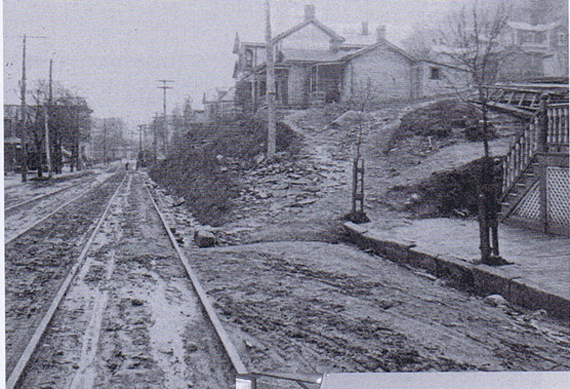
Tracks running from Boyce Street turnaround loop towards Mulberry Street.

The south end of Mulberry Street.
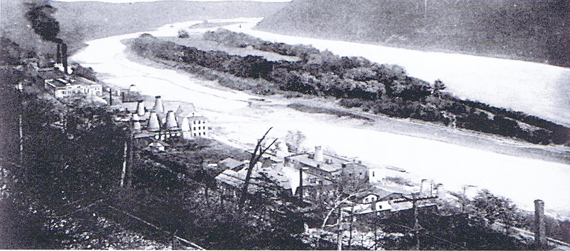
On the River Road there was a power plant and car barn. The power plant produced the current that were carried in the wires that ran the trolley car motors thus running each car. The car barn was used for storage and repairs of the cars. Both can be seen at the left end of this photograph. (ELHS)
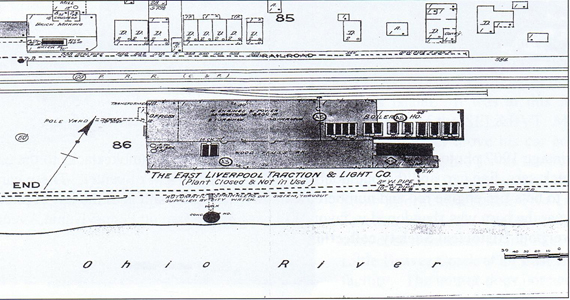
A Sanborn Fire Insurance map showing the Power Plant. The plant was no longer used after 1916.
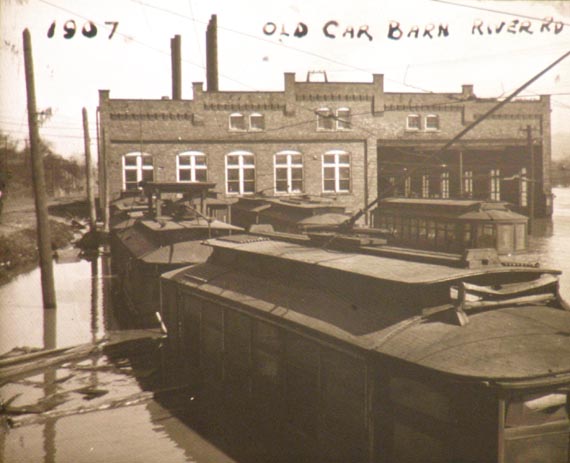
A very real problem was the constant potential for flooding as indicated here.
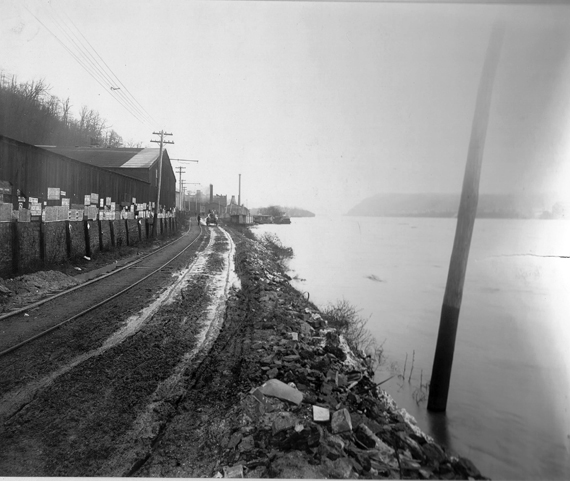
River Road along the Thompson Pottery.
The Trolley Transportation Days 3
This site is the property of the East Liverpool Historical Society.
Regular linking, i.e. providing the URL of the East Liverpool Historical Society web site for viewers to click on and be taken to the East Liverpool Historical Society entry portal or to any specific article on the website is legally permitted.
Hyperlinking, or as it is also called framing, without permission is not permitted.
Legally speaking framing is still in a murky area of the law
though there have been court cases in which framing has been seen as violation of copyright law. Many cases that were taken to court ended up settling out-of-court with the one doing the framing agreeing to cease framing and to just use a regular link to the other site.
The East Liverpool Historical Society pays fees to keep their site online. A person framing the Society site is effectively presenting the entire East Liverpool Historical Society web site as his own site and doing it at no cost to himself, i.e. stealing the site.
The East Liverpool Historical Society reserves the right to charge such an individual a fee for the use of the Society’s material.